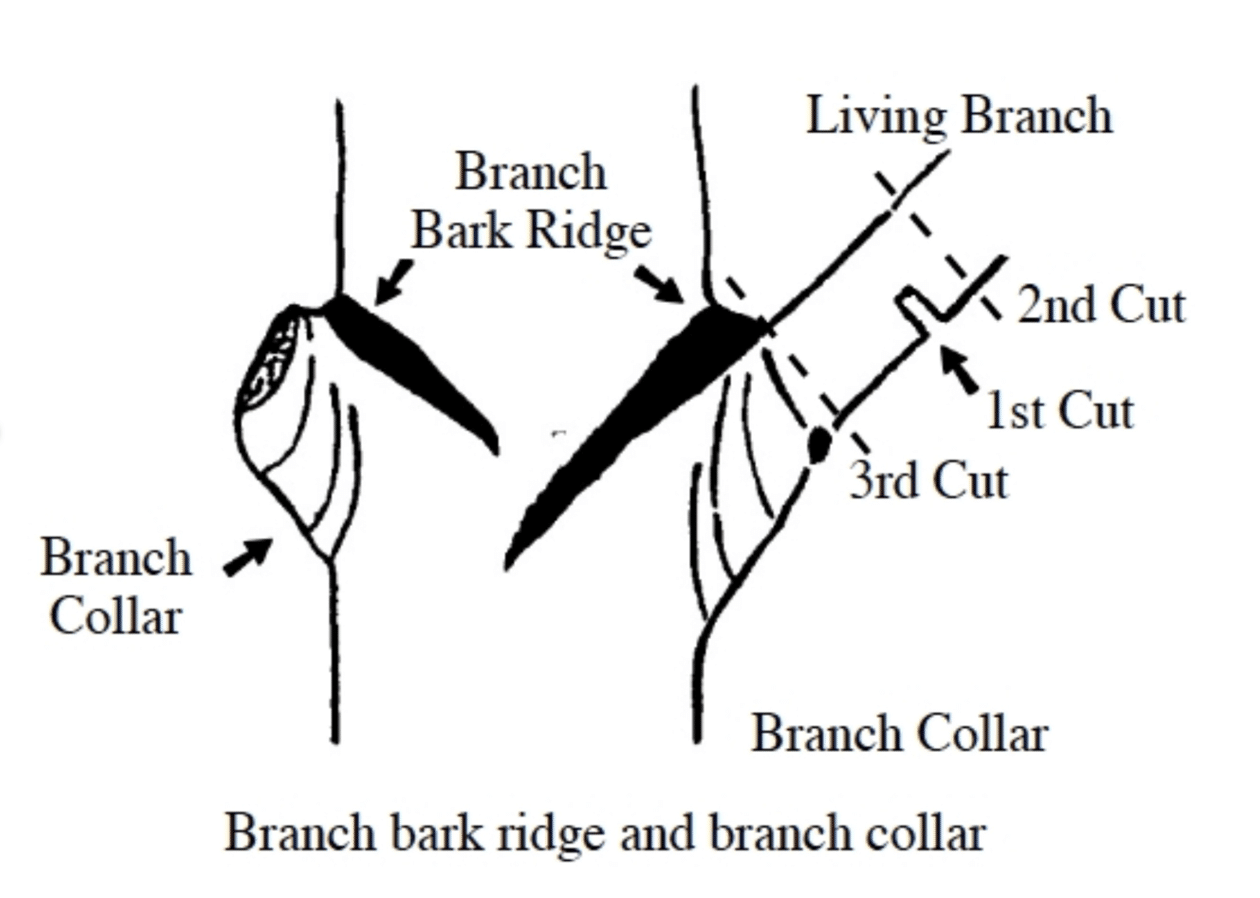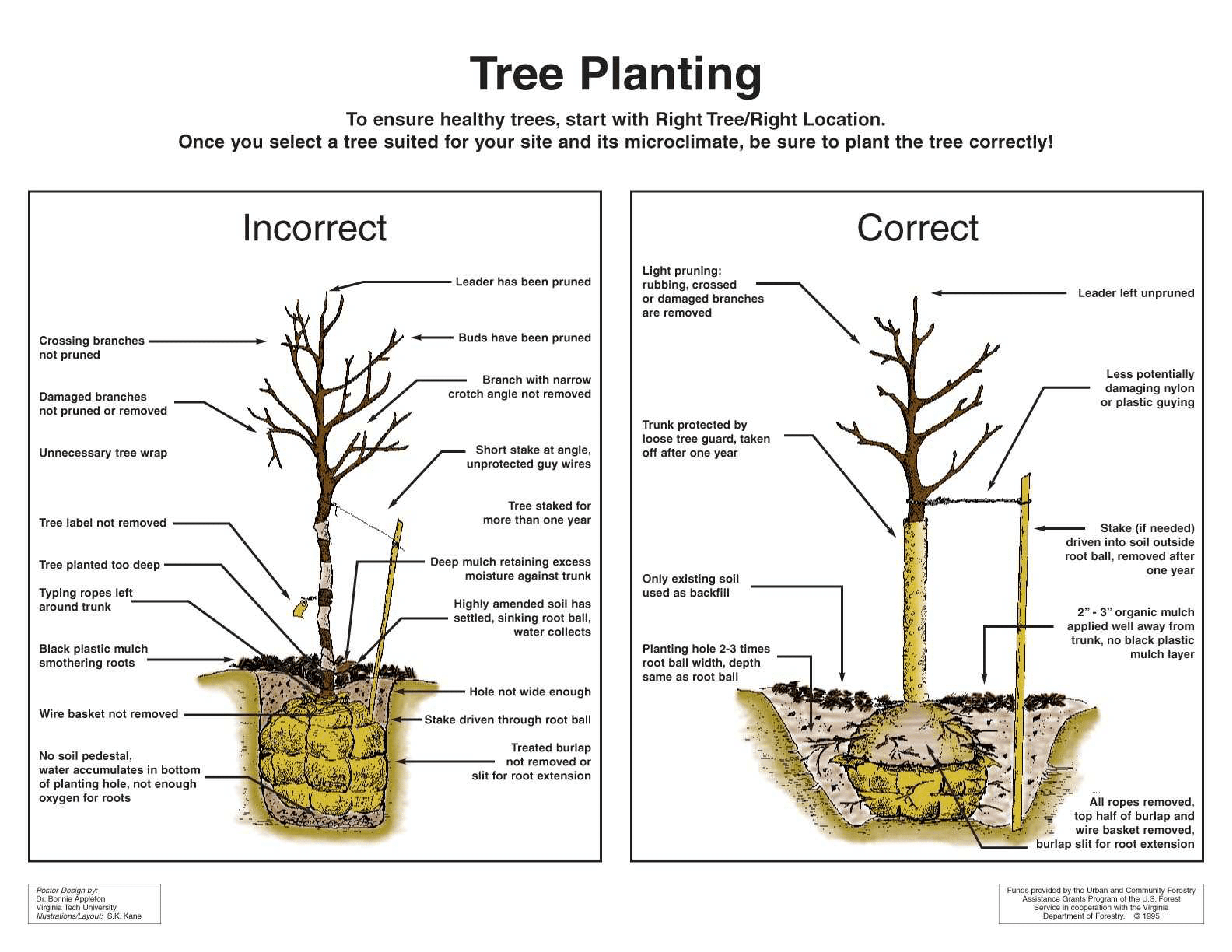Developmental pruning of young trees
Developmental pruning of young trees
Many tree problems and hazards can be corrected or avoided with proper pruning. Has anyone ever recommended cabling or bracing your tree? That co-dominate stem could have been pruned at the nursery or after it was planted, and the root system was re-established. There are many examples of mature trees with severe defects that could have been avoided early on in the tree’s life. If you have a mature tree with structural defects the only option may be the removal of the tree.
When pruning for future development you want to ensure there is a single dominate leader, proper branch structure and spacing. Look for future conflicts as the tree matures.
The quality of the pruning cuts is imperative for the health of the tree. All cuts should be just past the branch bark ridge and done in a manner so there are no rips or tears in the bark.
At least one half of the foliage should be on the branches arising from the lower two-thirds of the tree. Branches along the trunk help increase taper (girth if the main stem). You can leave temporary branches for several years and remove them as necessary for elevation or clearance.
Young vigorous trees can tolerate pruning much better than older mature trees. However, newly planted trees need time to recover from root loss. A good rule of thumb is to wait 2 years for pruning other than broken limbs.
Sometimes developmental pruning can be a 2-3 stage process depending on the species and location of the tree. Never remove more than 25% of the trees foliage during any growth season. In mature trees 25% can be too much.

Many people don’t think about pruning trees until they pose some sort of a problem such as encroaching on the house or hanging low over the street. Developmental pruning of young trees is the most cost-effective measure you can do for your trees.
James Martin
ISA Certified Arborist MA-0101 AT
Virginia Pesticide Applicator
